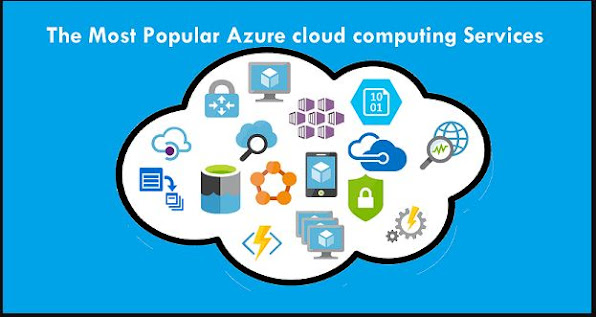විද්වත් මණ්ඩලයේ සාමාජිකයිනි, සම්භාවනීය අමුත්තනි,මිතුරනි, ඔබ සැමට සුභ උදෑසනක් ප්රාර්ථනා කරන අතරම අප සමඟ සම්බන්ධ වීම පිළිබඳ ස්තූතිවන්ත වෙනවා.අවුරුද්දේ ඉතාමත් කාර්යබහුල කාලයක මේ ආකාරයෙන් අප සමඟ සම්බන්ධ වීම වෙනුවෙන් සහ කාලය කැප කිරීම ගැන මම වඩාත් ස්තූතිවන්ත වෙනවා.
ශ්රී ලංකා සංවර්ධන ඇගයුම කියන්නේ ලෝක බැංකුවේ අර්ධ වාර්ෂික සාර්ව ආර්ථික ප්රකාශනය.එමගින් අරමුණු කර ගන්නේ දීර්ඝ කාලීන ක්රියාකාරීත්වය පිලිබඳ බර තැබූ පුරෝකතනයක් මත පදනම්ව පවත්නා ආර්ථික තත්ත්වය ගැන අදහස් දැක්වීමක්.ඒ වගේම මේ ගමනේදී මුහුණ පෑමට සිදුවන අභියෝග සහ අවස්ථාවන් සම්බන්ධයෙනුත් අවධානය යොමු වෙනවා.ශ්රී ලංකාවේ ආර්ථික ප්රගතිය සම්බන්ධයෙන් උනන්දුවක් දක්වන ප්රතිපත්ති සම්පාදකයන්, ව්යාපාරික නායකයන්,මූල්ය වෙළඳපළ ක්රියාකාරීන්, ජනතාව, සිවිල් සමාජය, විශ්ලේෂකයන්, වෘත්තිකයන් ආදී විශාල පරාසයක පැතිරුණු ජනකායක් වෙනුවෙන් තොරතුරු බෙදා හැරීමට අපි අදහස් කරනවා.
අපි මාස හයකට පෙර ශ්රී ලංකාව මුහුණ දුන් අභියෝග සහ ප්රගතිය ගැන සාකච්ඡා කල නිසා මගේ මිත්ර රැල්ෆ් තව සුළු වේලාවකින් ඒ පිළිබඳ කෙටි විස්තරයක් ඉදිරිපත් කරනු ඇත.ඉන් අනතුරුව ඔහු ශ්රී ලංකාවටත් අනෙකුත් රටවලටත්, නොවැදගත් යැයි කියා අමතක කල නොහැකි අභියෝගයක් වන රැකියා උත්පාදනය පිළිබඳ පැහැදිලි කිරීමක් සිදුකරාවි.
අපේ සංවර්ධන ඇගයුම මගින් ඉදිරිපත් කිරීමට බලාපොරොත්තු වන්නේ අපට හැකි පමණින් දත්ත රැස් කර ගනිමින්,ඒවා විශ්ලේෂණය කරමින් වඩාත් අපක්ෂපාතී වන සමබර අවබෝධයක් ලබා දීමටයි.මෙය වඩාත් උනන්දුවකින් කරන ලද්දක්. මන්ද මෙකී තොරතුරුවලින් අපි බලාපොරොත්තු වන්නේ මේ පිලිබඳ උනන්දුවක් දක්වන පිරිස් අතර වඩාත් ශක්තිමත් සහ වැදගත් විවාදයක් ගොඩ නැංවීම.
අපි රැකියා පිලිබඳ ගැටළුව තෝරා ගත්තේ ප්රධාන හේතු කීපයක් මත පදනම්ව. 2025 දැක්ම (Vision 2025) සහ 2018 අයවැය මඟින් මෙම තේමාව වඩාත් වැදගත් එකක් බව අවධාරණය කෙරුණා. වසර දෙකකට පෙරාතුව රට පිලිබඳ අපගේම ක්රමානුකූල පර්යේෂණයකින් සොයා ගනු ලැබුවේ ලංකාවේ රැකියාවන් සම්බන්ධ ගැටලු ආර්ථික වර්ධනයට බලපාන බාධකයක් වන බවයි.
මෑත කාලය තුලදී අපට රැකියාවන් ස්වරූපයෙන් වෙනස් වන්නේ කෙසේද යන ආකාරය පිලිබඳව නිරන්තරවම අසන්නට ලැබෙනවා. මෙහිදි, රැකියාව කියන නිර්වචනය සහ රැකියාවේ නියුතු වන ස්ථානය විය යුත්තේ කෙසේද යන්න වග පවා තාක්ෂණික වෙනස්කම් හමුවේ වෙනස් වන යන ආකාරය පිලිබඳව අසන්නට ලැබෙනවා. මම පාසල් යන කාලයේදී මට තිබුණු ප්රධාන ගැටලු වුණේ, ඉහළ ලකුණු ලබා ගන්නේ කොහොමද, විශ්ව විද්යාලයකට ඇතුළත් වන්නේ කොහොමද, හොඳ උපාධියක් ගන්නේ කොහොමද, ඒ ඔස්සේ හොඳ තත්ත්වයක් උරුම කර දෙන විශ්රාම වැටුපක් සහිත රැකියාවකට යන්නේ කොහොමද කියන ගැටලුයි. එහිදී එක රැකියාවකින් තවත් රැකියාවකට ඉක්මණින්ම මාරු වීම අගය කෙරුණේ නැහැ,හේතුව ඔබ දිගටම වැඩ කරනවා, ඉන්පසු විශ්රාම යනවා.
අද, බොහෝ මැදි ආදායම් රටවල,තරුණයන් අපේක්ෂා කරන්නේ අවදානම් ගැනීමට ඉඩ සලසන, ජීවිත කාලයටම එකක් නොවන, නවෝත්පාදනයන්ට ඉඩ සලසන රැකියාවක්. ඔවුන් වඩාත් ප්රිය කරන්නේ තමන්ගේ අත්දැකීම් සහ විවිධ හැකියාවන් සහ අවස්ථාවන් උරුම කර දෙන ලෙස රැකියාවන් වෙනස් කර ගැනීමට ඇති අවස්ථාවක්.බොහෝමයක් දෙනා හීන මවන්නේ ඉහළ වෙළඳ නාමයක් පවතින තැනක සේවය කිරීම පමණක්ම නොව, ආයතන ආරම්භකයන් වශයෙන් ඉහළ නාමයක් කරා ආයතන ගෙන යා හැකි තත්ත්වයක්.
ලංකාවේ පවතින මැදි ආදායම් තත්ත්වය කෙසේ වෙතත් මෙම ප්රවණතාවය රට තුළ මුල් බැස ගත යුතුයි.මට මෙහිදී බොහෝ විට අසන්නට ලැබුණේ දෙමාපියන්ගේ බල කිරීම මත වෛද්යවරුන්, නීතීඥයන් වී රාජ්ය අංශයේ සේවා නියුක්ත වීමට සිදුවන තත්ත්වයයි.මෙය වැරදියට තේරුම් ගන්න එපා! ! අපට වෛද්යවරුන්, නීතීඥයන් සහ රජයේ සේවකයන් අවශ්යයයි.නමුත් රජයේ පවතින සීමිත වකාශයට දරා ගන්න පුලුවන් කොයිතරම් ප්රමාණයක්ද?මෙහි ප්රතිඵලය වී ඇත්තේ රැකියා සම්පාදකයන් අභිබවා ගිය රැකියා අපේක්ෂකයන් ප්රමාණයක් බිහි වීමයි.
මගේ යෝජනාව නම් රැකියාව පිලිබද අදහස යළි නිර්වචනය කළ යුතුයි කියන එක. එය හුදෙක් විධිමත් රැකියාවක් හෝ අවිධිමත් රැකියාවකින් කියා වර්ගීකරණය කල නොහැකියි. එමෙන්ම අනාගතයේදී මුළු ජීවිත කාලයටම සෑහෙන සේ පවතින රැකියාවක් ලබාගැනීමට හැකිවේදැයි කියන්නට බෑ. අපිට අවශ්ය වන්නේ සමහරවිට නුදුරු අනාගතයේ ඇති වීමට නියමිත අප නොදන්නා රැකියා අවස්ථාවන් පවා බිහි කිරීමේ කාර්යභාරයේ ඉදිරියෙන්ම තරුණ ප්රජාව සිටිනු දැකීම. ඔබට ඒ සඳහා ප්රතිපත්ති සම්පාදකයන් ,පෞද්ගලික සහ රාජ්ය අංශයන් පෙළඹවීම මගින් අනාගත සේවායෝජකයන් සහ නව නිපැයුම්කරුවන් ඇති කර ගැනීමට සිදු වෙනවා.
ඒ වුණත් මේ මගින් වර්තමාන රැකියා ලෝකයට අභියෝගයක් වෙනවා. හෙට දිනයේ බිහිවන රැකියා වෙලඳපළ සම්පූර්ණයෙන්ම වෙනස් නම්, අද දවසේ පවතින අධ්යාපන ක්රමය අනගතයට අවශ්ය නවෝත්පාදන සහ කුසලතා වර්ධනයන්ට ගැළපෙනවාද?වෘත්තීය පුහුණු ආයතන හරහා අනාගතයට සරිලන ආකාරයෙන් පුහුණු පාඨමාලා වැඩිදියුණු කරන්නේ කෙසේද? අප තේරුම් ගත යුතුයි ජීවිත කාලයටම ගැළපෙන ලෙස රැකියා පුහුණුව ලබා දීමට නොහැකි බව. රැකියාවන් ප්රායෝගික තත්වයන්ට මුහුණ දෙමින් වෙනස් වනවිට මිනිසුන් හුදෙක් කාර්යාලවල ඉඳගෙන හිඳීම පමණක් ප්රමාණවත්ද? එලෙස කාර්යාලයේ රැඳී හිඳීම හැරුණු විට නිෂ්පාදන ක්රියාවලියට බලපෑමක්කළ හැකි වෙනත් ආකෘතීන් පවතිනවාද?
මේ තත්වය යටතේ රැකියා වල ස්වභාවය වෙනස් කල පසු රැකියාවේ නියුතු වන්නන් තවදුරටත් සුපුරුදු අයුරින් පැවති රැකියා ක්රමවේදය යටතේ වැඩ කටයුතු කිරීමක් නොසිදුවිය යුතුයි. තවද රැකියාවල නියුතුවන්නන් තුල මේ වනවිට රැකියාවකට ඇතුළු වීම,ඉන් පිටවීම ගැන මෙන්ම විධිමත් අංශයේ සිට අවිධිමත් අංශයට නිරතුරුවම මාරු වීමේ නැඹුරුතාවක් ආරම්භවී පවතන අතර මෙම තත්වය කෙමෙන් වර්ධනය වීමේ හැකියාවක් පවතී. නුදුරු අනාගතයේදී, රැකියා අතර සංචලනය අපගේ අනාගත තරුණ පරපුරේ ප්රධාන අංගයක් බවට පත්වෙයි. ඒ වගේම අපේ පරපුටරටත් වඩා ඔවුන් අවදානම් දැරීමට සහ නව ප්රවණතාවලට ගැළපෙන ආකාරයට පරිසරයක් නිර්මාණය කර ගැනීමට ඔවුන් පෙළඹෙනවා ඇති.
ඇතැම් උත්සාහයයන් අසාර්ථක වන විට ඉතාමත් වේදනාකාරි විය හැකි අතර එවැනි අවස්ථාවල අපගේ භූමිකාව විය යුත්තේ ඔවුන්ට යලි නැඟී සිටීමට සහය දෙමින් අනාගතයේදී ඔවුන් අපේක්ෂා කරන රැකියා අවස්ථාවන් සම්පාදනය කිරීමට ඉඩ සලසා දීමයි. ඒ නිසා සියලු බාධක බිඳගෙන මීළඟ ව්යවසායකයා වීමට බලාපොරොත්තු වන තරුණයිනි, ලෝකය බලා සිටින්නේ ඔබ දෙසයි.ඔබට සහය වීමට බලා සිටින පුද්ගලයන්ගේ අවධානය ඔබ දිනා ගත යුතුයි වාගේම අසාර්ථක වීම්වලට බය වෙන්නත් එපා! ඒ වගේම අලුතින් රැකියා උත්පාදනයට ඉඩ කඩ පවතින අය තරුණයන් හැකියාවන්ගෙන් සන්නද්ධ වනතුරු බලා සිටින්නට එපා. ඔවුන්ට ළඟා වෙලා නවෝත්පාදනයන් ඉදිරිපත් කිරීමට ඔවුන්ට වේදිකාවක් නිර්මාණය කර දෙන්න. එවිට සෑම දිශාවකටම ප්රතිලාභ බෙදී යන බවට සැකයක් නැහැ.
මේවා මගේ අදහස්. තවත් හොඳ අදහස් තියෙනවාට කිසි සැකයක් නැහැ.මගේ කාර්යභාරය වුණේ සාකාච්ඡාවක් ආරම්භ කිරීම නිසා මම හිතනවා අපේ ආර්ථිකය පිළිබඳව විශ්ලේෂණය අවසන් වු පසු ඔබ සියලු දෙනා සාකච්ඡාවට එකතු වෙයි කියලා.
මම කැමතියි අපගේ විද්වත් මණ්ඩලයට අනාගත රැකියා පිලිබඳ සාකච්ඡා කරන්නට ඉඩ සලසා දෙමින් මෙය අවසන් කරන්නට. ඔවුන් සැම සමගත් රැල්ෆ් මහතා සමඟත් එක්වන මෙන් ආරාධනා කරමින් මම අවසන් කතාව කරනවා.
ස්තුතියි!
ශ්රී ලංකාවේ සහ මාලදිවයිනෙහි ලෝක බැංකු අධ්යක්ෂක ආචාර්ය අයිඩා ස්වරායි රිඩ්ඩිහොග් කොළඹදී පැවැත්වූ ශ්රී ලංකා සංවර්ධන ඇගයුම එළිදැක්වීම - 2018- Colombo, ලංකාව












